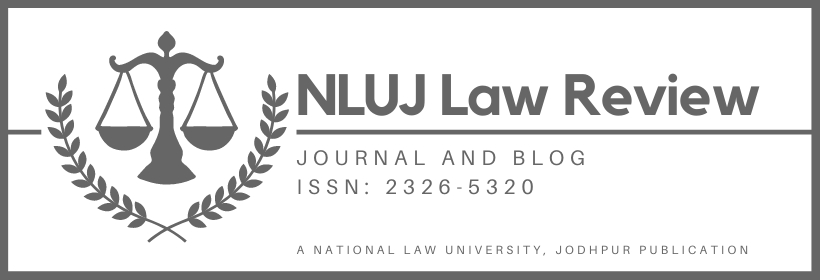Seemingly to tighten regulation of artistic expression in films, the Ministry of Information and Broadcasting (“MIB”) recently proposed amending the Cinematograph Act, 1952 (“1952 Act”) through the Cinematograph (Amendment) Bill, 2021 (“2021 Bill”).
The 2021 Bill notably seeks to, first, subdivide the ambiguous ‘U/A’ category of films into age-based categories, which the Mudgal Committee and Benegal Committee have recommended in the past; second, combat the menace of film piracy through the imposition of penalties; and last, remove judicially invalidated expressions in Section 6(1), 1952 Act and include a proviso thereto (“Proposed Amendment”) empowering the Government to refer a certified film back to the Central Board of Film Certification (“CBFC”) for re-examination. The Proposed Amendment has been assailed by the film fraternity which is justifiably afraid that, if converted into law, the amendment would make the Government a “super censor” and render filmmakers vulnerable to threats and vandalism.
This piece demonstrates that the Proposed Amendment is legally unsustainable, since it, first, improperly overrides judicial precedents; second, bestows uncontrolled discretion upon the Government; third, disproportionately curtails free speech; and last, overlooks statutory principles regarding the function of provisos. On this basis, the piece argues that the Proposed Amendment should not be enacted.
Improperly Overrules Judicial Pronouncements
Section 6(1), 1952 Act empowers the Government to call for the records of any proceedings relating to a film pending before the CBFC. Certain expressions in this provision also authorised the Government to revise decisions by the CBFC and the now abolished Film Certification Appellate Tribunal. These were struck down as unconstitutional by Karnataka High Court in K.M. Shankarappa[i] and its decision was upheld by the Supreme Court (“SC”) on appeal. The primary rationale in both rulings was that these portions violated the settled constitutional doctrine of ‘separation of powers’, which forms part of the “basic structure” of our Constitution, by allowing the executive to, first, exert the power of judicial review; second, interfere with the exercise of judicial functions; and last, “set at naught” decisions by a quasi-judicial body.
Although the Proposed Amendment removes invalidated portions of Section 6(1), it simultaneously gives back substantially similar revisional authority to the Government, effectively allowing it to undermine the sanctity of CBFC’s decisions. MIB has justified this by stating that the legislature is empowered, in certain instances, to “overrule or nullify” judicial decisions. However, MIB’s understanding of the underlying judicial principle to which its statement alludes is erroneous. In multiple decisions, including Kalpana Mehta, SC has held that ‘separation of powers’ interdicts the legislature from overturning a judicial decision through mere declaration. However, the legislature may enact a law that takes away the substratum of a judicial pronouncement by curing legal infirmities highlighted therein.
Thus, the Proposed Amendment in no way cures the defects in Section 6(1) identified in the Shankarappa rulings. Therefore, the amendment is unsustainable for improperly nullifying well-reasoned judicial precedents.
Bestows Unfettered Discretion
The Proposed Amendment empowers the Government to refer certified films back to the CBFC for re-examination if in its opinion upon receipt of a complaint, any of the statutory grounds under Section 5B(1), Cinematograph Act for denying certification are attracted. Practically, this means that the certificate granted in respect of a film is placed in abeyance till such time CBFC re-examines its decision. This compromises the public exhibition of the film, thereby curtailing the filmmaker’s freedom of speech and expression.
The presence of procedural safeguards in Section 69A of the Information Technology Act, 2000, which is a content-blocking provision that limits free speech, was a vital consideration for the SC to uphold this provision’s constitutionality in Shreya Singhal. Procedural safeguards, however, are conspicuously absent in the Proposed Amendment, making the discretionary authority it confers upon the Government practically untrammelled. Keeping in view settled principles of natural justice such as prior notice, ‘audi alteram partem’ and reasoned decisions, safeguards to the Proposed Amendment should have ideally included: (i) providing notice to the certificate-holder of the complaint received by the Government; (ii) providing an opportunity to reply to the complaint; (iii) conducting a pre-decisional hearing; and (iv) requiring the issuance of a reasoned order explaining exercise of revisional authority.
In Virendra[ii] and Khan Chand[iii], SC has ruled that statutory provisions which confer discretionary power upon the Government, without prescribing safeguards to prevent its misuse, are unreasonable and violative of Article 14. Accordingly, the absence of safeguards to govern the exercise of the Government’s discretionary revisional authority under the Proposed Amendment, renders the amendment constitutionally infirm.
Disproportionately Curtails Free Speech
A globally recognised standard for assessing the validity of restrictions on constitutional rights is the doctrine of proportionality. In Modern Dental, the SC adopted a four-pronged proportionality test in India, which has been subsequently affirmed in Anuradha Bhasin and Puttaswamy-II. According to this test, limitation of a constitutional right is proportionate only if, first, it is for a legitimate purpose; second, a rational nexus exists between the measures undertaken to effectuate such limitation and fulfilment of the purpose; third, such measures are necessary for that no alternatives exist which can similarly fulfil the purpose, through lesser limitation; and last, there exists a balance between the importance of achieving the purpose and the social importance of preventing the limitation on the constitutional right.
MIB has justified the enactment of the Proposed Amendment as a means to address complaints about certified films relating to the grounds in Section 5B(1), 1952 Act, which are derived from Article 19(2). Admittedly, the connection between the Proposed Amendment and constitutionally permissible restrictions to free speech could arguably satisfy the ‘legitimate purpose’, ‘rational nexus’ and ‘balancing’ requirements. However, the Proposed Amendment still fails to satisfy the ‘necessity’ prong for the following reasons:
1. The Government is already empowered under Section 13, 1952 Act to suspend public exhibition of films if their screening is likely to cause a breach of public peace. Thus, there is no compelling need or legislative lacuna justifying enactment of the Proposed Amendment since a legal provision sufficiently capable of tackling public disorder arising out of the exhibition of a certified film already exists within the same statute.
2. Section 13 is also arguably less restrictive to free speech because, first, suspension bars a film’s screening only temporarily, however, exercising revisional power under the Proposed Amendment could result in permanent revocation of a film’s certificate for public exhibition upon re-examination by CBFC; and second, Section 13 contains safeguards, including a requirement to issue reasoned suspension directions, which are absent in the Proposed Amendment.
Since the prongs of proportionality postulated in Modern Dental are conjoint conditions, failure to satisfy the ‘necessity’ requirement alone renders the Proposed Amendment disproportionate. Accordingly, the amendment is unlikely to survive the scrutiny of a constitutionality challenge.
Disregards Principles Regarding the Construction of Provisos
The statutory tool deployed in the Proposed Amendment to confer revisional powers to the Government is a proviso. Regarding the function of provisos in statutes the SC has ruled that, ordinarily, provisos should merely qualify or exempt enactments and should not enlarge the scope of the enacting clause.
The Proposed Amendment overlooks these tenets since the proviso it seeks to incorporate into Section 6(1), 1952 Act enlarges the scope of the provision by authorising the Government to sit in judgment over CBFC’s decisions. This, incidentally, is the same revisional authority that the Karnataka High Court and SC removed from Section 6(1). For this reason, also, the Proposed Amendment is untenable.
In addition to the legal issues explained above, by allowing the Government to question the certification granted to films, the Proposed Amendment wrongfully subverts filmmakers’ legitimate expectation in the conclusiveness of CBFC’s decisions. This could cause grave prejudice and loss to filmmakers since they enter meticulous arrangements for the exhibition of certified films based on this expectation. Furthermore, the amendment also impedes filmmakers’ liberty to “critique and criticise” by subjecting the medium of celluloid to additional governmental oversight. This could have a chilling effect on filmmakers’ freedom of expression.
Concluding Remarks
Admittedly, freedom of speech is not an absolute right under our Constitution and is subject to reasonable restrictions. MIB’s rationale that the Proposed Amendment is necessary to address complaints about certified films attracting the “non-negotiable” grounds under Article 19(2) is, therefore, defensible since exercising this power could arguably prevent real-world harm and public disorder.
However, the Proposed Amendment still stands out as an excessive measure for addressing breaches of the public peace, when compared to the less restrictive alternative of suspending public exhibition of certified films. Further, considering that the Proposed Amendment grants unconstrained discretion to the Government, the possibility of revisional powers being abused cannot be ruled out. Thus, on balance, the prejudice which the Proposed Amendment could cause to filmmakers’ artistic liberties, outweighs any arguable societal benefit which enacting the amendment may achieve. Accordingly, the Proposed Amendment deserves to be abandoned by MIB.
[i] K.M. Shankarappa v. Union of India, ILR 1990 Karnataka 4082
[ii] Virendra v. The State of Punjab & Ors., AIR 1957 SC 896
[iii] State of Punjab & Ors. v. Khan Chand & Ors., (1974) 1 SCC 549
This article has been written by Dhruv Bhatnagar, a litigation lawyer practicing in New Delhi.



